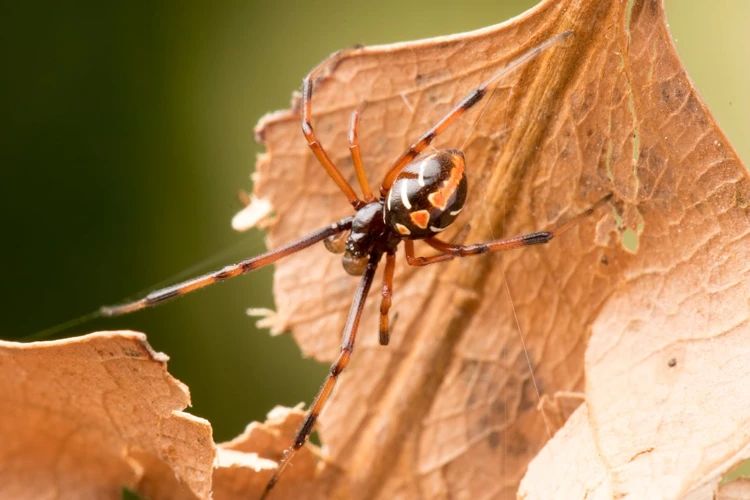As our climate continues to change at an alarming rate, it’s essential to study the potential impacts on different species. In this article, we’ll explore the future distribution of black widow spiders under climate change scenarios. These venomous spiders are notorious for their sleek, black appearance and red hourglass-shaped markings. But what kind of habitat do they require to thrive? How will climate change affect their distribution patterns, and what does that mean for human health? Join us on this journey to uncover the ecological consequences of climate change on black widow spiders.
Black Widow Spiders: Habitat and Distribution
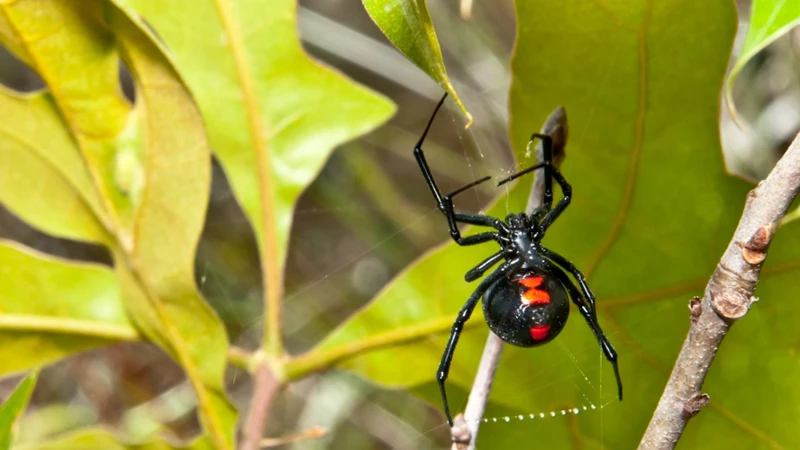
Black Widow Spiders are known for their venomous bites which could result in serious health complications if not treated promptly. These spiders are found around the world and typically require a warm and dry climate to live in. They typically can be found in a range of habitats including suburban areas, rural areas, and even in high altitude regions. Additionally, Black Widow Spiders are found in South America and have a presence in almost every state in the US.
There are different habitat requirements for Black Widow Spiders. These spiders often prefer to live in secluded areas, such as log piles, rock crevices, and other similar structures. They are often found in open areas with little vegetation. Suburban areas with well-manicured lawns provide an ideal habitat for these spiders since they can easily hide in various structures such as fences, utility boxes, and even outdoor furniture.
Black Widow Spiders have a current distribution in almost every state in the US and in several other countries worldwide. They are often found in rural areas in the southern United States, where temperatures are warm, and there is little rainfall. The species has also started to expand its range to the north in recent years. This expansion has been attributed to human activity such as transportation and increased development in what are considered non-traditional habitats for the species.
In high altitude regions, the range of Black Widow Spiders is limited by declining temperature and available prey. Research has shown that Black Widow Spiders may have limited success in colonizing the areas of high elevation due to the adverse temperature and snow cover conditions. However, with changing climates, the spread of Black Widow Spiders could be possible in this type of habitat.
Understanding the habitat requirements and distribution of Black Widow Spiders is important in identifying areas of potential conflict with humans. Proper management and conservation strategies should be implemented to protect these species as well as to minimize the risks of human envenomation.
Habitat Requirements for Black Widow Spiders
Black widow spiders, known for their distinctive black coloring and infamous reputation, have specific habitat requirements that dictate where they can thrive. These venomous arachnids prefer warm climates and can be found in a variety of habitats, including rural, suburban, and even alpine environments. In this section, we will explore the specific habitat requirements that black widow spiders need and where they are commonly found.
Current Distribution of Black Widow Spiders
The current distribution of black widow spiders is mainly in warm and dry regions throughout the world, including Africa, Asia, Australia, Europe, North America, and South America. These spiders prefer to live in secluded areas such as woodpiles, crevices, and cluttered areas in human dwellings, especially in rural and suburban areas. They can also be found in vegetated areas such as bushes, shrubs, and grasslands. In North America, the black widow spider is most common in the southern and western regions, including the southwestern United States and Mexico.
However, the black widow spider has also been found in higher altitude areas, such as in the Rocky Mountains in Colorado, and may potentially expand their range with the changing climate. In South America, black widow spiders can be found in several countries but are particularly common in Brazil.
Despite their prevalence, some populations of black widow spiders are at risk due to the loss and fragmentation of their habitats caused by human activities and development. Conservation efforts are being made to protect these spiders and their habitats.
Climate Change and Its Potential Impact on Black Widow Spiders
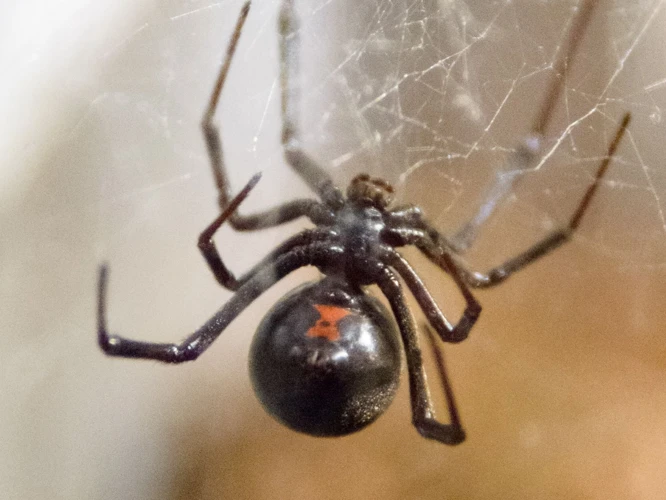
Climate change is expected to have significant impacts on the distribution and habitat of black widow spiders. With rising temperatures and changes in precipitation patterns, the spider’s current range is likely to shift, posing potential ecological consequences for both the spider and its predators. According to a study published in the journal PLOS ONE, the preferred habitat of the black widow spider is likely to shift northward and eastward in the coming decades due to climate change.
Effects on Temperature and Precipitation
Climate change is causing shifts in weather patterns that are affecting the temperature and precipitation levels in different regions. Increases in temperature and changes in precipitation patterns can lead to changes in the distribution and availability of prey for black widow spiders. As a result, the spiders may be forced to shift their range in order to continue finding sufficient food sources.
Ecological Consequences for Black Widow Spiders
The potential ecological consequences of climate change on black widow spiders are still unclear. However, research has suggested that range shifts for these spiders could have cascading effects on ecosystems that rely on them as a food source. For example, reducing the abundance of black widow spiders in certain regions could have ripple effects throughout the food web, as predators such as birds and lizards may be left with fewer prey options.
Projected Changes in Black Widow Spider Distribution
Climate change models are predicting significant changes to the distribution and abundance of black widow spiders in the coming decades. The spiders are expected to shift their range northward, potentially leading to increased encounters with humans in areas where the spiders were previously not found. Additionally, the changing habitat requirements of black widow spiders may lead to them expanding their range into new areas, potentially creating conflicts with humans and other species.
Climate Change Scenarios and Models
Climate change models predict the potential future impacts of climate change on the environment, including the distribution and abundance of black widow spiders. These models take into account a range of factors, such as changes in temperature, precipitation patterns, and habitat suitability. Climate change scenarios and models suggest that black widow spiders will need to adapt to the changing habitat conditions in order to survive and continue to play their role in ecosystems.
To lessen the potential negative impacts of climate change on black widow spiders and other species, conservation efforts are becoming more critical than ever. By protecting and preserving the habitats of these and other species, we can help ensure that they have the necessary resources to continue thriving in a changing climate.
Effects on Temperature and Precipitation
The effects of climate change on temperature and precipitation patterns have been a matter of concern for researchers around the globe. These changes can have a significant impact on the habitat and distribution of various species, including black widow spiders. Rising temperatures and altered precipitation patterns may lead to changes in the availability of food and water sources, as well as impact breeding and survival rates. In this section, we will explore the potential effects of climate change on black widow spiders and their habitat.
Ecological Consequences for Black Widow Spiders
Climate change is altering the environment at an alarming rate and it is expected that there will be significant ecological consequences for black widow spiders. Changes in temperature, precipitation, and natural habitat are likely to have a profound impact on the distribution and population sizes of these spiders. Due to their preference for warm and dry habitats, black widow spiders may be particularly vulnerable to climate change driven shifts in temperature and precipitation patterns.
According to research studies, increased frequency of extreme weather events, such as heat waves, heavy rains, and droughts, can have destabilizing effects on ecosystems, leading to changes in the populations of different species including black widow spiders. Rising temperatures and prolonged droughts can also cause habitat fragmentation and loss, which may cause black widow spiders to move into new or different areas, leading to expansion of their range. Additionally, changes in the availability of prey species due to climate alterations may cause black widow spiders to become more competitive for limited food resources.
It is possible that increasing temperatures could create conditions favorable for the growth and spread of invasive species, which could displace black widow spiders from their natural habitats. Ecological disturbances in one geographic area can also spread to other parts of the spider’s range, causing cascading effects on the spider’s distribution. Climate change could lead to disruptions of the complex relationships between black widow spiders and their natural predators and prey species, possibly leading to changes in the overall ecosystem structure and function.
The ecological consequences of climate change for black widow spiders are multifaceted and complex, and could result in significant changes to their population sizes, distribution, and relationships with other species in their ecosystems. Future research will continue to provide insights into the ways that climate change will affect black widow spiders and their interactions with their environments.
Projected Changes in Black Widow Spider Distribution
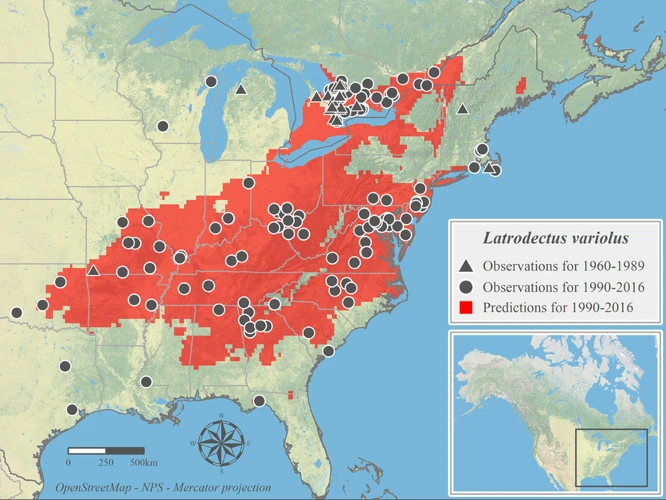
Climate change is expected to cause significant changes in the distribution of Black Widow Spiders. The projected changes will have a significant impact on the habitats of these spiders. According to the climate-black-widow-spider dataset, various models have been developed to simulate the potential distribution of the Black Widow Spider under different climate scenarios.
Scientists have developed many climate change scenarios, each of which prescribes how different climate variables such as temperature and precipitation could evolve from past to future. Several models based on these scenarios have been used to predict the distribution of the Black Widow Spider. Studies suggest that under the RCP 8.5 scenario, which represents high greenhouse gas emissions, Black Widow Spiders may expand their range northward.
As temperatures increase and precipitation patterns fluctuate, the potential range of the Black Widow Spider is expected to shift in different directions. Several studies predict an overall contraction in the southern range of the spider and an expansion of the northern range. The projections suggest that if the climate continues to warm, the range of the Black Widow Spider will expand, and it could potentially reach areas where it is currently not found.
Changes in land use also play a pivotal role in the distribution of Black Widow Spiders. Urbanization and deforestation will have a significant impact on the habitats of Black Widow Spiders. Research indicates that urbanization, agricultural land use, human population density, and vegetation have considerable impacts on the presence and abundance of Black Widow Spiders. As humans continue to modify the environment, Black Widow Spiders may rapidly adapt to new environments, new prey, and new threats.
The potential for Black Widow Spider range expansion or contraction is highly dependent on future climate change scenarios, land use changes, and demographic trends. Continuous monitoring of the Black Widow Spider population, combined with habitat management and further research on genetic adaptation, will improve our understanding of the potential impacts of climate change on this spider species.
Climate Change Scenarios and Models
As the Earth’s climate continues to change at an accelerating rate, it is essential to understand how black widow spider populations will be impacted. Various scientific researches and models have been developed to predict the changes that will occur in their distribution and habitat. These models take into account factors such as temperature rise and precipitation patterns, along with the impact of human activity on the environment. By examining these climate change scenarios and models, it is possible to better understand the future of black widow spider populations and their impact on the environment. Let’s explore this in more detail.
Expected Changes in Black Widow Spider Habitat
Strong evidence suggests that the distribution of black widow spiders may change as a result of climate change. Changes in temperature and precipitation patterns can significantly impact their habitats, with some areas becoming unsuitable and others newly hospitable. According to climate change models, the suitable habitat for black widow spiders may shift to regions that are currently too cold for them, such as the northern parts of North America and Europe, while southern regions could become too hot and dry for them.
Based on the findings of recent research, the table below shows the expected changes in black widow spider habitat in various regions of the world under different climate change scenarios.
| Temperature Increase | Precipitation Increase | Expected Changes in Black Widow Spider Habitat | |
|---|---|---|---|
| North America | 2-3 °C | 5-10% increase | Expansion of black widow spider habitat to northern regions |
| Europe | 1-2 °C | 5-10% increase | Moderate expansion of black widow spider habitat in southern regions, shifting northwards from previously established ranges |
| South America | 2-4 °C | 10-20% decrease | Reduction in black widow spider habitat, leaving only a few suitable locations in the Andean region |
| Africa | 2-3 °C | 10-20% decrease | Reduction of black widow spider habitat, leaving only a few suitable locations in central and southern regions |
| Asia | 2-4 °C | 10-20% decrease | Reduction of black widow spider habitat, leaving only a few suitable locations in central regions |
It is important to note that these changes will not occur overnight but will take place gradually over a period of decades or even centuries. However, it is still a cause for concern as it may affect the overall health of black widow spider populations, and consequently, the health of their ecosystems.
Impacts on Human Health
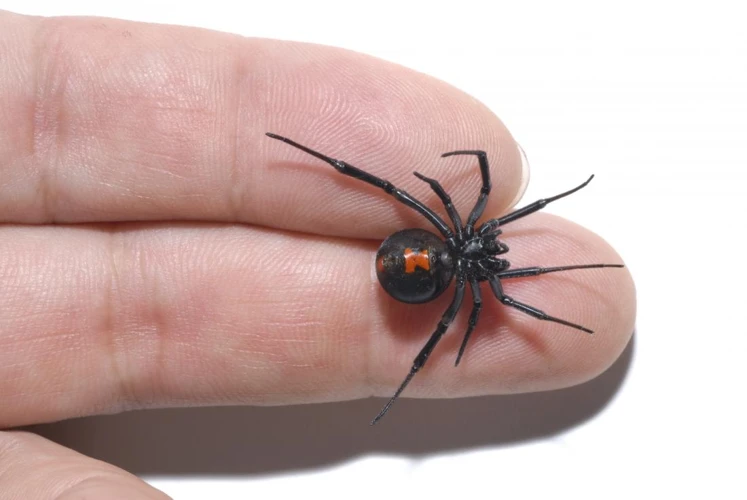
The black widow spider’s venomous bite has significant impacts on human health. Black widow spiders are considered one of the most venomous spiders in North America. The bite of a female black widow spider can cause severe pain and muscle cramping, resulting in symptoms such as nausea, vomiting, headache, and difficulty breathing. In rare cases, black widow spider bites can even be fatal, especially for young children, the elderly or individuals with weakened immune systems.
The risk of black widow spider bites may increase with the expected range expansion of these spiders under climate change. Black widows will tend to expand to new areas and face new environmental conditions, which will lead to more encounters with humans and, potentially, more bites.
Currently, black widow spiders are most commonly found in rural and suburban environments within their established range. However, with climate change, black widows will likely continue to expand their range northward and potentially higher up in altitude in the US, Canada, and other countries, putting more people at risk.
While there are several medical treatments and antivenoms available for treating black widow spider bites, prevention is key. Ways to avoid bites include wearing protective clothing, gloves, and shoes, and using caution when working in areas with known black widow spider populations. It is also important to be aware of black widow spider distributions in your area, and to seek immediate medical attention if bitten.
In conclusion, the impacts of black widow spiders on human health are serious and are likely to increase with climate change-induced range shifts. People who live in areas with established or expanding black widow populations should know the risks of black widow spider bites and take appropriate preventative measures.
Potential Increases in Black Widow Spider Bites
As global temperatures rise and weather patterns become more unpredictable, there is a growing concern about the potential increase in black widow spider bites. The black widow spider is known for its poisonous bite, which can be extremely painful and even life-threatening in some cases. With the projected changes in black widow spider distribution due to climate change, the risk of bites may be higher than ever before. In this section, we will explore the possible scenarios for increased black widow spider bites and the potential impacts on human health. We will also discuss the current medical treatments available for black widow spider envenomation.
Current Medical Treatments for Black Widow Spider Bites
Black widow spider bites can be extremely dangerous, especially if left untreated. The venom from a black widow spider can cause a range of symptoms including pain, muscle spasms, nausea, and difficulty breathing. It is important to seek medical attention as soon as possible if you suspect you have been bitten by a black widow spider.
What are the current medical treatments for black widow spider bites?
The following table outlines the most common treatments for black widow spider bites:
| Treatment | Description |
|---|---|
| Antivenom | Antivenom is the most effective treatment for black widow spider bites. It works by neutralizing the venom in the body, reducing the severity of the symptoms. Antivenom is usually administered intravenously in hospital settings and is most effective when given within the first few hours of the bite. |
| Pain relief medication | Over-the-counter pain relief medications, such as ibuprofen or acetaminophen, can help to reduce pain and inflammation caused by a black widow spider bite. Stronger pain relief medications may be administered if the pain is severe. |
| Muscle relaxants | Bites from black widow spiders can cause muscle spasms and cramps. Muscle relaxants can help to alleviate these symptoms and make the patient more comfortable. |
| Wound care | Cleaning the bite wound can help to prevent infection. In some cases, the wound may need to be surgically cleaned or debrided. |
What should you do if you are bitten by a black widow spider?
If you are bitten by a black widow spider, you should seek medical attention immediately. Try to capture the spider if possible, as this can help medical professionals identify the species and determine the appropriate treatment. It is also important to stay calm and avoid moving too much, as this can spread the venom throughout the body.
Internal link: black widow spiders and human envenomation.
Adaptation and Mitigation Strategies
Adaptation and Mitigation Strategies are essential to minimize the potential risks of black widow spiders in the future. There are ways to reduce the impacts of climate change on black widow spider habitats and avoid black widow spider bites.
Ways to reduce climate change impacts on black widow spiders:
One approach is to reduce greenhouse gas emissions that contribute to climate change. This can be achieved at the individual level by conserving energy, using public transportation or electric vehicles, and reducing waste. At the societal level, policies that promote renewable energy, sustainable agriculture, and conservation of natural habitats can help mitigate climate change. Additionally, efforts to reduce urbanization and maintain natural areas can help preserve suitable habitats for black widow spiders.
Best practices for avoiding black widow spider bites:
The best way to avoid black widow spider bites is by exercising caution and awareness of your surroundings. You should be careful when handling objects or entering dark spaces, such as garages, storage sheds, or woodpiles, where black widow spiders may be present. You should wear protective clothing such as gloves and boots when working outdoors and avoid barefoot walking in outdoor areas. If you suspect that you have been bitten by a black widow spider, seek medical attention immediately.
It’s worth mentioning that black widow spiders are not typically aggressive and usually bite only in self-defense. It’s essential to respect their habitats and keep a safe distance from them. By implementing these adaptation and mitigation strategies, we can preserve the habitats of black widow spiders and avoid any potential negative interactions or consequences.
It is crucial to approach the issue of black widow spiders in a thoughtful and informed manner to ensure the safety and preservation of both humans and black widow spiders.
Ways to Reduce Climate Change Impacts on Black Widow Spiders
Reducing the impact of climate change on black widow spiders can be achieved through various strategies. By implementing measures to mitigate climate change, we can help reduce the potential ecological consequences that may impact black widow spider habitats. Additionally, we can take steps to reduce human activities that contribute to climate change and promote conservation efforts towards this unique arachnid species. Let’s explore some ways we can actively work towards protecting black widow spiders and their habitats. In order to better understand black widow spider habitats, please refer to our previous section on habitats for black widow spiders.
Best Practices for Avoiding Black Widow Spider Bites
Black widow spiders are infamous for their venomous bite, which can cause serious health problems for humans. To avoid the risk of being bitten, it’s important to take preventive measures and follow some basic best practices. Here are some of the most effective steps you can take to avoid black widow spider bites:
- Wear protective clothing: When working or spending time in areas where black widow spiders may be present, cover as much of your skin as possible with long sleeves and pants, and wear gloves and sturdy shoes or boots.
- Inspect outdoor equipment: Black widow spiders are known to hide in outdoor equipment such as gardening gloves, boots, and gardening tools. Inspect such items before using them, and shake them out to remove any spiders or webs.
- Keep your home tidy: Black widow spiders often hide in cluttered areas such as garages, sheds, or woodpiles. Keep these areas clean and tidy, and avoid leaving objects lying around.
- Use insecticides: When dealing with a black widow infestation, consider using insecticides labeled for spider control, or hire a professional pest control service.
- Be cautious in dark places: Black widow spiders are nocturnal and tend to hide in dark spaces such as closets or under furniture. Be cautious and wear gloves when reaching into dark areas or moving furniture.
By following these best practices and taking preventive measures, you can reduce the likelihood of encountering black widow spiders and lower your risk of being bitten. However, if you do get bitten by a black widow spider, seek medical attention immediately. The venom of the black widow spider can cause serious health problems and even death in some cases.
Conclusion
In conclusion, the future distribution of black widow spiders under climate change scenarios remains uncertain. As temperature and precipitation patterns shift, the ecological consequences for black widow spiders could be significant, leading to changes in their habitat and potentially increased risks of human bites. While certain adaptation and mitigation strategies could help reduce climate change impacts on black widow spiders and prevent bites, more research is needed to fully understand and address these issues. It is important for us to continue monitoring the presence of black widow spiders, especially in areas where their range may be expanding due to human activity. Furthermore, efforts towards conservation should also address the conservation of black widow spiders and their habitats. By promoting awareness and understanding of these important issues, we can better prepare for and address the potential impacts of climate change on black widow spiders and human health.
Frequently Asked Questions
What are black widow spiders, and where do they live?
Black widow spiders are venomous arachnids that are typically found in warm, dry climates such as the southern and western United States, Mexico, and South America.
How do black widow spiders hunt and eat their prey?
Black widow spiders use their venom to paralyze or kill their prey, which consists of insects, small animals, and sometimes other spiders. They then use their fangs to inject digestive enzymes into their prey, which allows them to consume it.
What are the habitat requirements for black widow spiders?
Black widow spiders require a warm, dry climate with lots of hiding places such as rocks, logs, and debris, as well as access to prey.
What is the current distribution of black widow spiders?
Black widow spiders are currently found in the southern and western United States, Mexico, and South America.
How will climate change impact black widow spider populations?
Climate change is expected to alter the range and habitat of black widow spiders, potentially enhancing their ability to expand their range to new habitats.
What are the potential ecological consequences of climate change for black widow spiders?
Climate change may alter the timing of key life cycle events, which could potentially disrupt the ecological balance of black widow spider populations.
What climate change scenarios and models are being used to project changes in black widow spider distribution?
Scientists are using a variety of climate models and scenarios to predict the potential impacts of climate change on black widow spider populations, including increases in temperature and changes in precipitation patterns.
How might expected changes in black widow spider habitat impact their distribution?
Expected changes in habitat due to climate change, such as increases in temperature and changes in precipitation patterns, are likely to influence the ability of black widow spiders to successfully establish their populations in new areas.
What are some potential ways to reduce climate change impacts on black widow spiders?
Some potential ways to reduce the impacts of climate change on black widow spiders include reducing greenhouse gas emissions, mitigating the effects of urbanization, and protecting natural habitats from human development.
What are some best practices for avoiding black widow spider bites?
Best practices for avoiding black widow spider bites include wearing gloves when working outside, shaking out clothing and footwear before putting them on, and keeping outdoor areas free of clutter and debris where spiders might hide.

